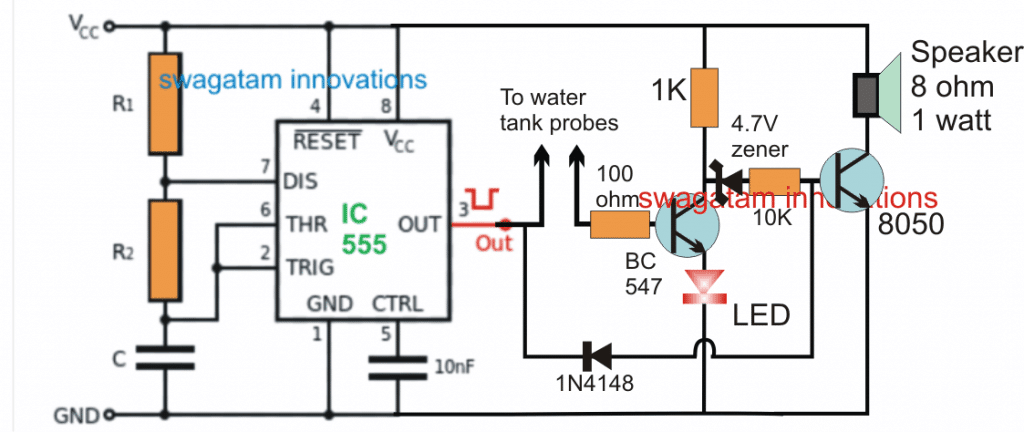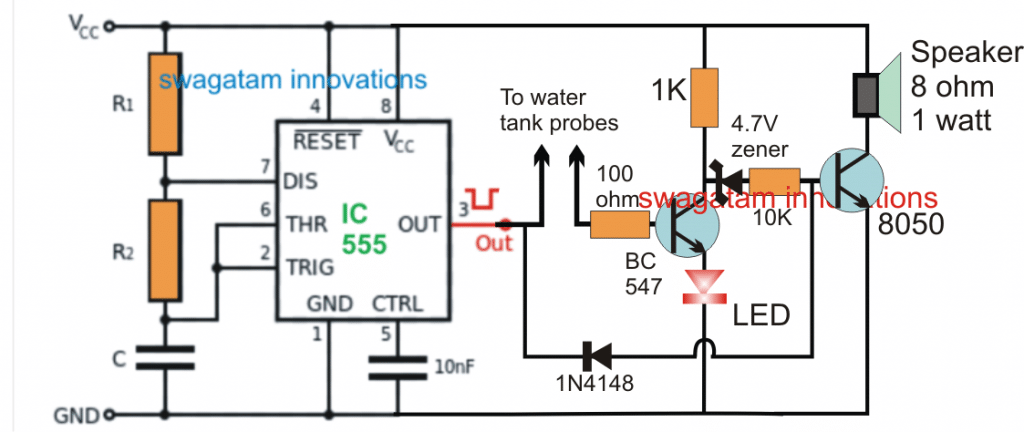In this article I have explained a simple car tank water sensor alarm circuit using IC 555 and a pulsating signal on the sensing probes to pevent corrosion on the probes. The idea was requested by Mr. Peter.
Circuit Objectives and Requirements
- I couldn't find how to post a project proposal on your website. May be you can help me with this:
- I have searched the web extensively for a "No Water Alarm" circuit to use in my car.
- I want to put a sensor (probes) in the plastic radiator expansion tank that can sound an alarm when it detects no water.
- I can't find anything on internet, only water present alarms or level indicators. Like rain detectors, flooding detectors etc.
- From what I've seen using a 555 timer to create an AC signal to go to the probes is best in order to prevent corrosion due to a DC circuit for the test probes.
- probes go inside expansion tank
The Design
Referring to the figure below, the proposed car tank water sensor circuit can be built using an IC 555 astable design.
Although I am not sure whether a pulsating DC or even an AC signal on the water level sensor probes is able to prevent corrosion in it or not, here we employ the principle as expressed in the above request.
In the design the IC 555 is rigged as an astable multivibrator circuit, at a frequency that may be able to produce the most desirable tone on the connected loudspeaker. This can be experimented by adjusting the values of R1/R2/C connected at pin#2/6/7 of the IC.
The pulsating signal required for the probes inside the car water tank is derived by breaking the base connection of the transistor connected with the pin#3 of the IC. In the absence of water, this transistor remains deactivated, which allows the next transistor to conduct and it sounds the alarm indicating an absence of water in the car tank.
However as soon as water presence is detected, the first transistor now begins getting the base bias through probes due to the water bridging across the probes. This enables the pin#3 transistor to conduct and illuminate the LED at its collector, indicating the presence of water inside the tank.
This action also forces the second transistor to stop conducting, and the speaker tone is halted complementing the LED indication regarding the presence of tank water inside tank.
Circuit Diagram

